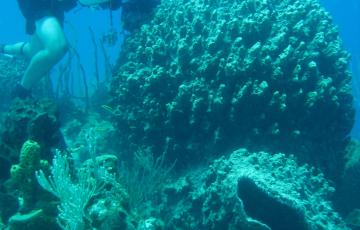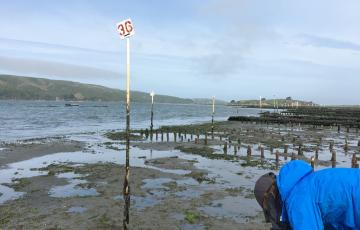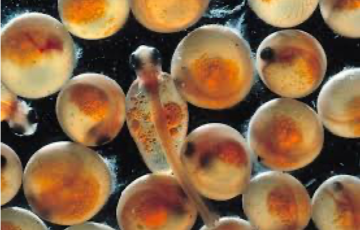EZ Pass for Fish
To download the activity page, click here.
This activity was produced by the UMCES Chesapeake Biological Laboratory.
Where do the fish go and when do they go there?
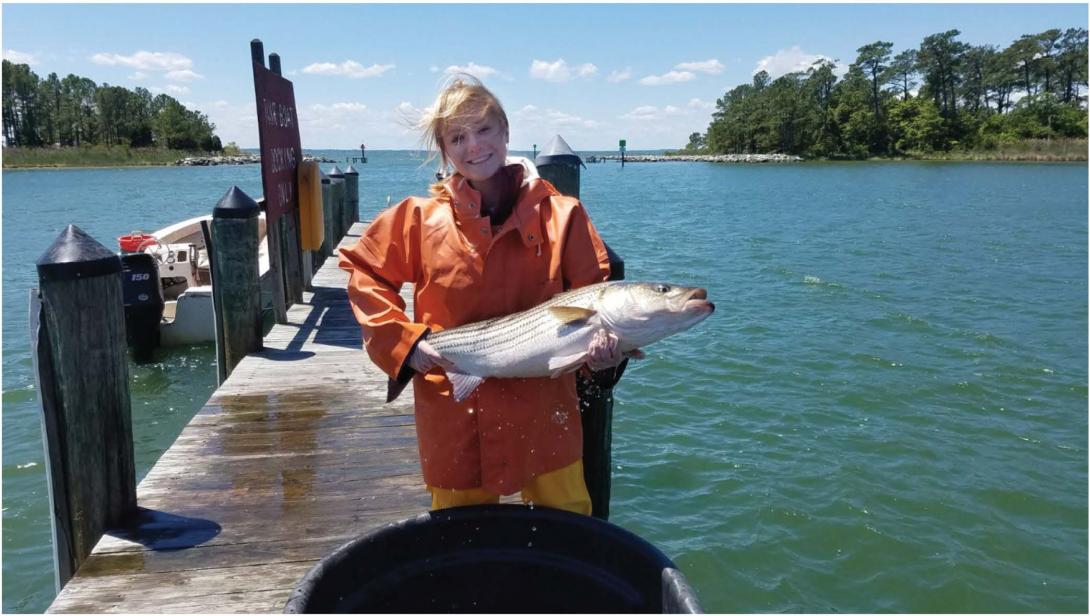
Your parents may have something called E-Z Pass on their car. If your family drives over the Bay Bridge, a toll booth collects this E-Z Pass identification (ID) number. The toll booth also records the time and date when you drove by. This lets your family pay a toll for crossing the bridge, without having to wait as long in line to pay a cash fee.
Just like the E-Z Pass on your family's car, scientists can use acoustic tags and receivers to track where fish go, and when they go there. This location information allows scientists to study the movements of fish in the Chesapeake Bay and in the Atlantic Ocean.
To conduct this research, Chesapeake Biological Laboratory scientists catch striped bass. Striped bass are important because people like to catch and eat them for fun and as a job.
When a fish is caught, scientists determine if it is boy or girl. They weigh and measure the length of the fish. Then, they perform a small surgery to implant an acoustic tag into the fish. An acoustic tag is a small device, about the size of your thumb. Each acoustic tag has a unique ID, and makes a "ping" sound every few seconds.
Fish, like the one scientist Ellie Rothermel holds below, recover from this surgery in a tank. Then, they are released back into the wild.

Scientists, like Ellie, go on big boats to put receivers into the Chesapeake Bay and the Atlantic Ocean (above). A receiver is a device, about the size of a liter soda bottle. Receivers listen for the pings made by acoustic tags.
When a fish with an acoustic tag in it swims past a receiver, the receiver hears and then records the "ping" sent out by the tag. This "ping" includes the unique ID of the fish. The receiver also records the time and date of when each "ping" occurs.
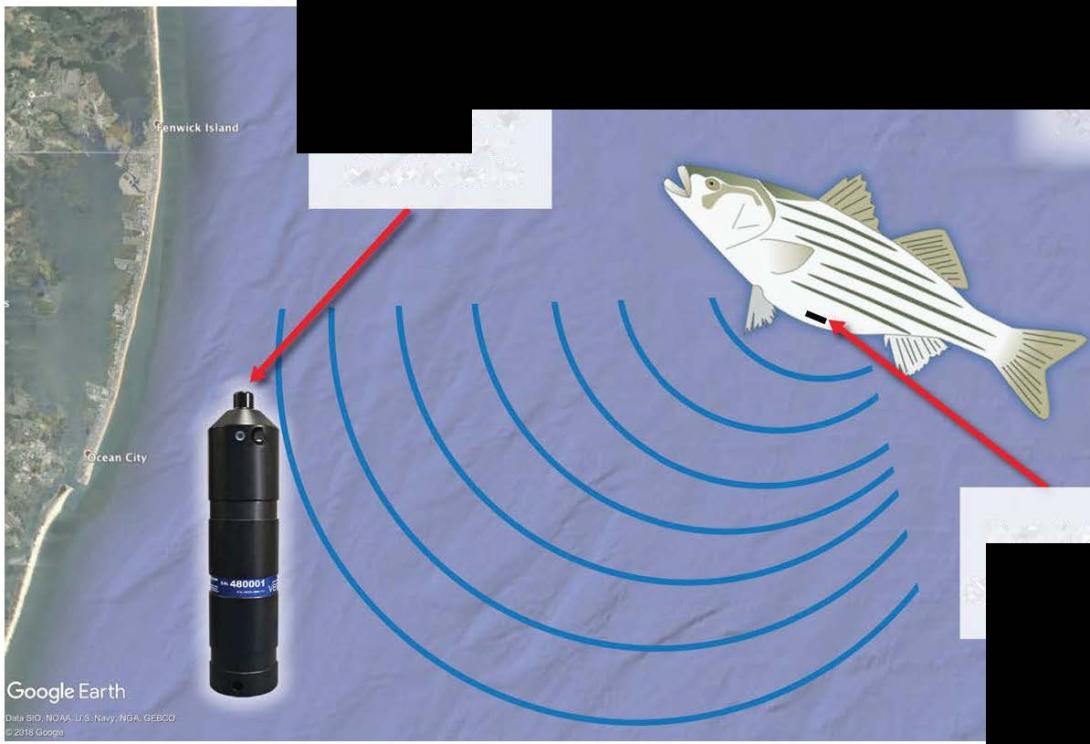
When fish pass through an array of receivers (above) scientists can begin to understand where and when fish are moving. An array is an ordered series or arrangement of something.
Chesapeake Biological Laboratory scientists are monitoring the movements of striped bass in the Wind Energy Area in the ocean near Ocean City, MD. The Wind Energy Area will eventually be home to a "wind farm." Wind farms use wind power to make electricity. Wind is a renewable source of energy, meaning that we won't run out of it.
However, building a wind farm can make a lot of noise underwater. It's possible that this noise could scare fish away from areas that are important to them. Scientists want to know if striped bass are swimming through the Wind Energy Area, and if so, when they use this location.
Scientists can provide this information to people who manage the environment.
This research could help reduce human impacts on these important fish.
Can you help CBL scientists map the movements of a striped bass?
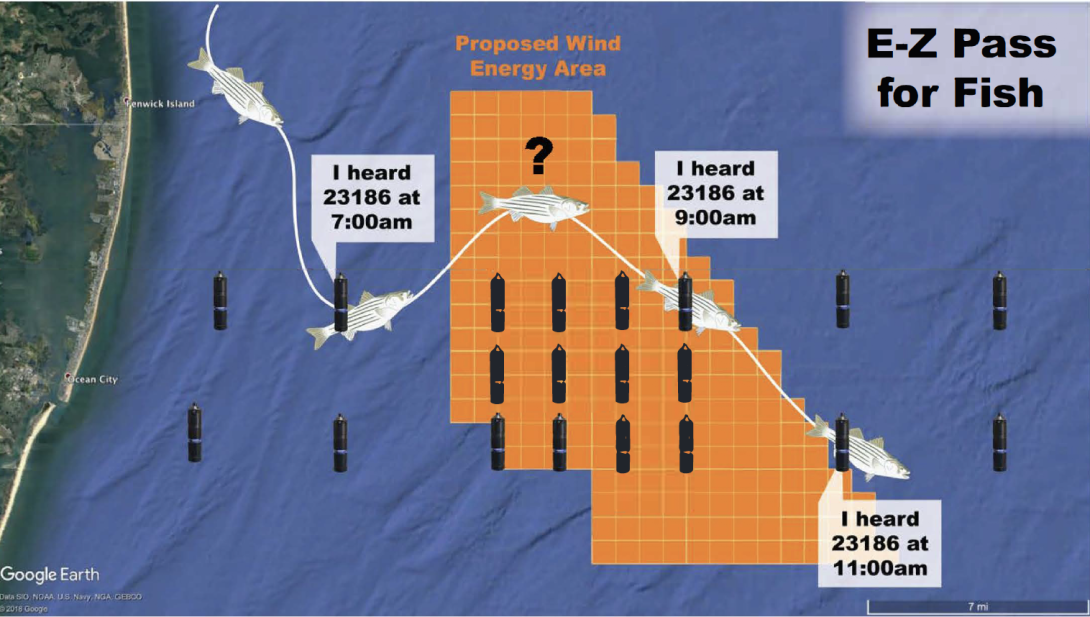
A striped bass with the ID number 23186 is about to swim through an array of receivers. As you can see below, each receiver has been assigned a unique letter. Help the scientists at the Chesapeake Biological Laboratory track it by completing the activity here.
